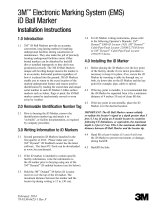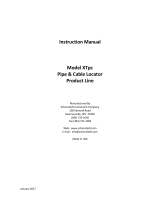
2 78-8130-6150-0 Rev G
Contents
1. Safety Information ............................................................................................ 6
A. Intended Use ................................................................................................ 6
2. About This Manual............................................................................................ 7
3. Quick Start ........................................................................................................ 8
A. Transmitter Battery Installation ................................................................... 8
B. Receiver Battery Installation ....................................................................... 9
C. Cleaning ..................................................................................................... 10
D. Service and Accessories ............................................................................. 10
E. 3M™ Dynatel™ Transmitter 2250 Keypad and Connector Denitions.... 10
F. 3M Dynatel Transmitter 2273 Keypad and Connector Denitions ............ 11
G. Maximum Transmitter Output ................................................................... 12
H. Rechargeable Battery ................................................................................. 12
I. 3M Dynatel Receiver 2250M Key Pad and Display Denitions ................ 13
J. 3M Dynatel Receiver 2273M Key Pad and Display Denitions ................ 14
4. Menu Displays ................................................................................................ 15
A. Main Menu ................................................................................................ 15
5. Conguring The Receiver ............................................................................... 18
A. Select Depth Units ..................................................................................... 18
B. Setting the Receiver Clock ........................................................................ 18
C. Selecting a Language ................................................................................. 18
D. Enabling/Disabling Frequencies ................................................................ 19
E. Selecting External Jack Frequencies (Tone Frequencies) .......................... 19
F. Creating User Dened Frequencies ............................................................ 19
G. Filtering Power Frequency Interference .................................................... 20
H. Selecting Locating Audio .......................................................................... 20
6. Buried Cables And Pipes: Transmitter Connections ....................................... 21
A. Direct Connect Method ............................................................................. 21
B. Dyna-Coupler Method ............................................................................... 23
C. Induction Method ....................................................................................... 24
7. Receiver Modes .............................................................................................. 28
A. Directional Peak (Dir Pk) .......................................................................... 28
B. Directional Null (DirNull) ......................................................................... 28
C. Special Peak (Spl Pk) ................................................................................. 29
D. Induction Peak (Ind Pk) ............................................................................. 30
E. Expanded Mode ......................................................................................... 30
8. Depth and Current Estimate ............................................................................ 30





















